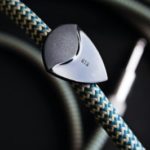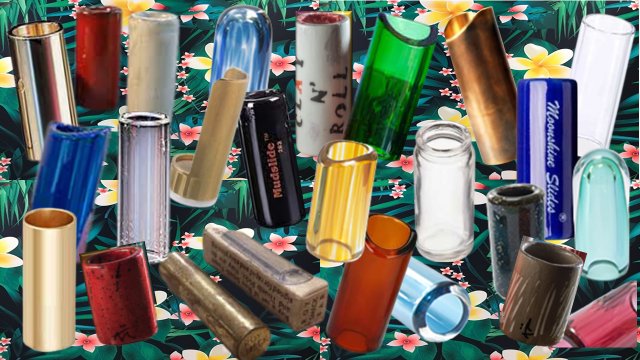
Types Of Guitar Slides
There are so many guitar slides available. The vast variety of different shapes, sizes and materials could be overwhelming, when it comes to choosing the right one!
Each can give you a different sound and feel. It will take time and patience to find the sound you want to achieve. You want to find the one that fits and feels comfortable when you play.
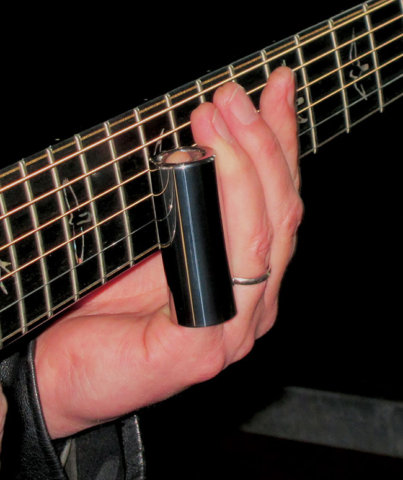
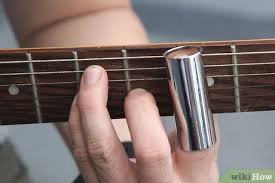
Making the right choice of guitar slide dramatically affects your slide playing and maybe even whether you continue to play at all, so it’s important to get it right. There are many accounts of people using knives, bottles, socket wrenches and anything else that comes to hand as a guitar slide, indeed Duane Allman famously used a medicine bottle, Lowell George used a socket wrench and many players use bottle necks, hence the term bottle neck guitar. So if the great slide players seem to be using anything that comes to hand, why take the time to shop around? Well another case study would be Martin Simpson using ever rarer, harder and more expensive materials throughout his career to find the perfect tone and sustain, eventually coming to tungsten carbide, an extremely hard material that can only be machined using lasers and diamond cutting, needless to say these slides are costly but give amazing results in terms of tone and volume.

It’s a very personal choice but understanding a few factors can make this choice easier and if you really get into slide playing you will likely have a few slides to hand, either failed experiments until you find your favorite or because you change slide based on song or what instrument you are playing. Firstly whichever slide you use should fit properly. Your “fretting” hand (left hand) position should be as close as possible to your non slide hand position so the slide must not cover your entire finger but instead come down as far as your first knuckle as shown in the picture below. The slide should not be too loose or too tight, after playing my slide is quite a snug fit but is never stuck on my finger and feels comfortable. Additionally, people use their slide commonly on the third or fourth finger, if you are going to alternate between the two, different slides may be in order.
You may hear some people refer to slides as bottlenecks. Many moons ago, before slides were produced on a commercial scale, old blues players would remove the top from a wine bottle, smooth the edges and used it as a slide, hence the name ‘bottleneck’ slide. Glass medicine bottles were also popular makeshift slides. Today there are literally hundreds of slides available in a whole host of dimensions constructed from a wide range of materials too.
“I just want to be able to play and make people feel good with what I do. When you’re thinking that way, anything can happen. And usually what happens is good.” … Mark Knopfler
Length
Slides are made in a variety of different lengths. For instance, some players may need a slide to cover all six strings whilst others will only need to play a few strings at a time so will be content with something a little shorter.
Full-length slides typically measure around 70mm in length and the smallest slides are around 25mm in length. The length of the slide you choose will correlate with the finger you’ll be wearing your slide on. For your ring or pinky fingers, a short-medium length slide will help keep the slide well balanced while you play. Anything longer increases the weight which can make it challenging to slide up and down the neck.
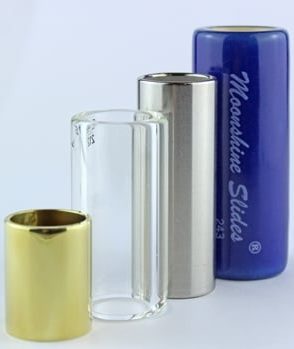
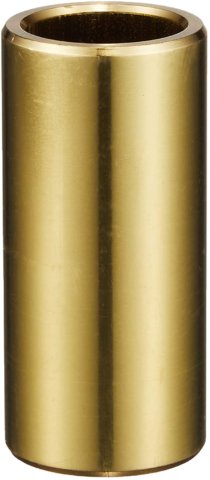
Inside Diameter
The size of the slide you choose will depend on the size of your fingers. You only have to look at your own hand to know that each finger varies slightly in thickness. It’s important to consider which finger you will be placing the slide on.
Using your little finger/pinky finger frees up your 1st, 2nd and 3rd fingers to play normally. You wont need to constantly remove the slide every time you need to fret a chord. The pinky is your smallest and weakest finger in terms of strength so controlling a bigger slide with this finger can be difficult.
The most popular finger is the 3rd finger (ring finger). You can use the fingers on either side to help control the movement of the slide and you still have the first two fingers free for fretting the strings.
Your middle and first fingers are chunkier so a larger size would be needed. Most slides are measured across the inside diameter of the slide. The inside diameter refers to the size of the main hole, where your finger fits through. When choosing your slide consider one with a little bit of extra room if you can. The reason is that as you play, your fingers will start to heat up, sweat and expand slightly. If you choose a slide that’s too big, the slide will be loose, which can affect your control and technique.
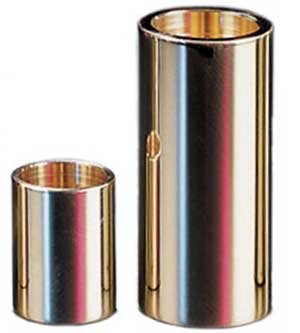
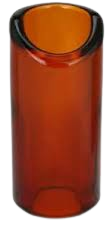
Wall Thickness
The outside diameter measures the width of the slide from one outside edge to the other, not just the area where your finger goes. Two slides could both have an inside diameter of 20 mm, but one could have a larger outside diameter than the other. This indicates that the slide with the larger outside diameter has a “thicker wall”. Wall thickness will often be dictated by the material of the slide itself. Imagine the difference between a fine wine glass and a thick coffee mug.
Wall thickness has a bearing on a slide’s tonal properties. Some of the cheaper glass slides that are available today can have thinner walls. These make the slide nice and light. A thin-walled slide tends to lack the body and tone usually associated with a slide with thicker walls.
Weight
The larger the dimensions of the slide, the heavier it will be. The most influential factor on weight is the material of the slide. Brass slides are heavier than most other materials.
Weight can dictate how easy the slide is to control A heavier slide on your pinky may require more energy to move it around, which could effect your technique and tone. A slide can be as light as just 12 grams and the heaviest slides can weigh over 100 grams.
A heavy and dense slide can produce a greater depth of tone and sustain notes for longer. If you’re just starting out, a lighter slide will help you concentrate on your technique first.
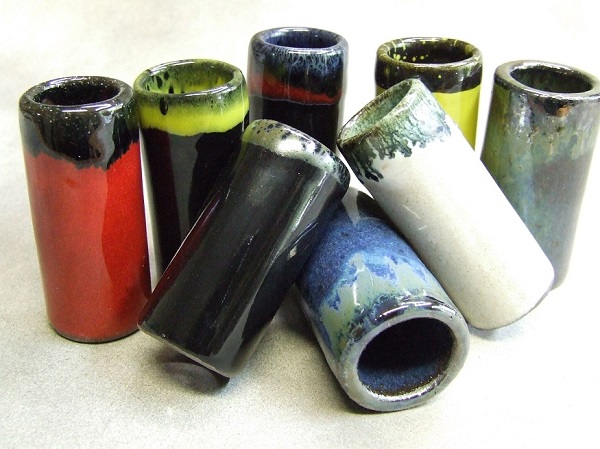
Material
Slides are constructed from a variety of materials. When slides were first fashioned from bottlenecks, glass was the obvious choice. However, as the demand for slides has grown, there has been an increase in the various materials offered by manufacturers.
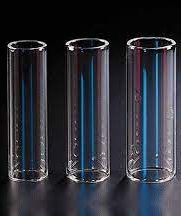
Glass
Glass still remains one of the most popular materials, sometimes pyrex. Glass slides are often favored by electric guitar players. They’re light in weight and don’t deliver as much sustain as other materials. However, when you are playing electric guitar, the volume and gain of your set will help give that extra oomph when needed. Glass gives a nice smooth and warm tone.
Ceramics
Ceramic is another material that has grown in popularity over recent years. The interior of these slides helps absorb sweat and moisture. Ceramic slides are a compromise between metal and glass. The texture, hardness, and weight fall between the other two materials. The ability of the slide to glide, the tone, and the sustain are somewhere between metal and glass. Ceramic slides are brittle, and may break if you drop it.
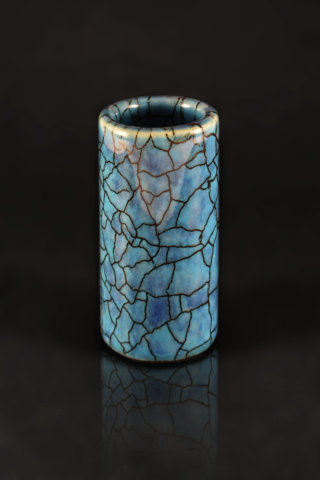
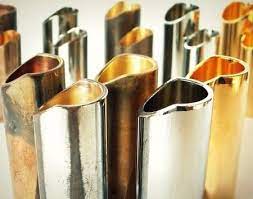
Metal
Metal is a great material for a guitar slide. It is sturdy, and it’s not going to break even if you drop it. Stainless steel and brass are two of the metals used to make metal slides. You get long sustain and a sound that is a little harsh and bright what’s a metal slide. For rock guitar or blues guitar, metal slides are often the popular choice. A brass slide has a softer and denser tone when compared to a metal one.
Brass
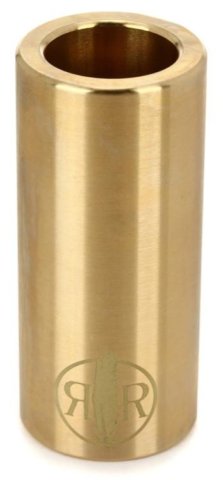
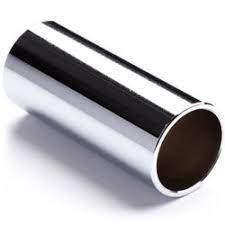
Chrome
This type works great for electrics, they’re lightweight and the metal on metal combination gives a deep, snappy tone that sounds awesome with a bit of overdrive. You can also get a really dark, gritty sound, which is perfect for those roaring solos. They’re also equally as good for an acoustic but can lack some of that full-bodied sound that a brass one can offer. If you want to be playing some dirty old blues in an open tuning with a load of drive then go for one of these!
Sometimes, it just takes a bit of experimenting to see which gives you the sound you want and what feels the most comfortable.
Guitar & Gear Articles


















